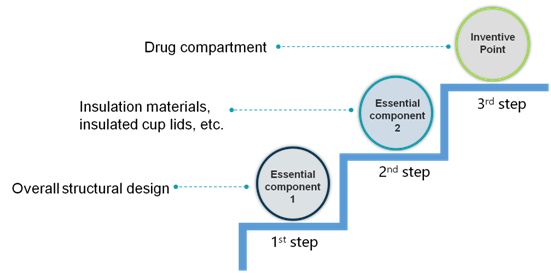
According to the White Paper on China's Intellectual Property Protection in 2021, local courts at all levels across the country received 550,263 first-instance intellectual property cases and concluded 515,861 cases, including 31,618 new patent cases. Compared with 2020, these three data increased by 24.1%, 16.5%, and 10.8% respectively. With the policy trend of "strengthening intellectual property protection," it is reasonable to believe that these data will continue to grow rapidly in 2022.
The continuously increasing number of intellectual property cases also reflects the recognition of the national innovation entities for the intellectual property protection system, and the enthusiasm for utilizing intellectual property protection to promote innovation is constantly improving. This also means that, from another perspective, when a product is about to enter the market, market entities are more necessary to ask themselves: Is there a possibility of infringing someone else's patent rights with my product? Have I taken appropriate measures to prevent the risk of patent infringement?
For example, X Company has developed a new type of thermos cup, the "inventive point" of which is that a space for accommodating drugs (drug compartment) and a drug release button are provided on the thermos cup. Users can add drugs from the drug compartment to the thermos cup and form a medicinal solution in the cup by clicking the drug release button as needed.
Mr. A, the boss of X Company, is eager to try it out: our thermos cup is a great tool for toning the body and promoting health in the post-pandemic era, and we need to push it to the market as soon as possible. Moreover, we have applied for a patent for this solution, and we have conducted sufficient novelty searches on this invention before applying for the patent. The search results are sufficient to prove that this solution is an excellent intellectual achievement of our R&D personnel and is "new" enough. There should be no risk of infringement for such a new technology solution, right?
This kind of question is sometimes common, but unfortunately, Mr. A may still need to do a little more work.
The fact is that, if novelty searches are used instead of infringement risk assessment, or if the strategy of novelty searches is used for risk assessment search, there is a high possibility of misjudging infringement risks, resulting in products that have not undergone sufficient risk assessment being hastily put on the market and being attacked by competitors.
Novelty searches, as the name suggests, are used to determine whether a certain technical solution is "new" through prior art searches, that is, to search according to novelty and inventive step requirement of the Patent Law to judge its prospects for patent granting. Novelty searches are a routine step before filing a patent application to avoid wasting resources by the patent application procedure.
Therefore, novelty searches mainly aim at the "inventive point" in the technical solution and generally do not cover all relevant technical solutions. Specifically for this thermos cup example, the novelty search only proves that no one else has published the prior art concerning the "drug compartment", and this idea is unique. However, the thermos cup has not only the drug compartment as a component, but also the overall structural design of the thermos cup, insulation materials, insulated cup lids, etc., which are essential components of the thermos cup as well. These essential components are usually difficult to be covered thoroughly in novelty searches, but there may be relevant patents hidden in these areas.

As shown in the above figure, the novelty search only covers the inventive point of the technical solution for Company A's thermos cup - the content on the third step, but often has insufficient coverage for the first and second steps that form the foundation of the third step. If X Company's competitor Y Company applies for a patent for the design of the insulated cup lid and this patent happens to be the same as X Company's insulated cup lid design, then this patent actually poses an infringement risk to X Company's product, but this risk was not effectively identified in the novelty search.
Therefore, when conducting patent infringement risk assessment, our goal is not to "search accurately", but to "research comprehensively".
In a patent infringement risk assessment project, we will fully disassemble the product's technology and try to find all relevant patents from all technical perspectives that constitute this product, and then check each patent one by one to see if it poses an infringement risk.
Only after comprehensive infringement risk assessment can we determine whether the product may be attacked by competitors when it is pushed to the market, and what patent weapons competitors may have. After these comprehensive assessments are completed, if existing infringement risks or potential risks (such as unauthorized patents) are identified, we can in turn look for a proper way to avoid or reducing the IP risks.
Comprehensive patent infringement risk assessment can provide reliable precaution for the products' exhibition, promotion, market launching and overseas marketing activities.
Follow us






